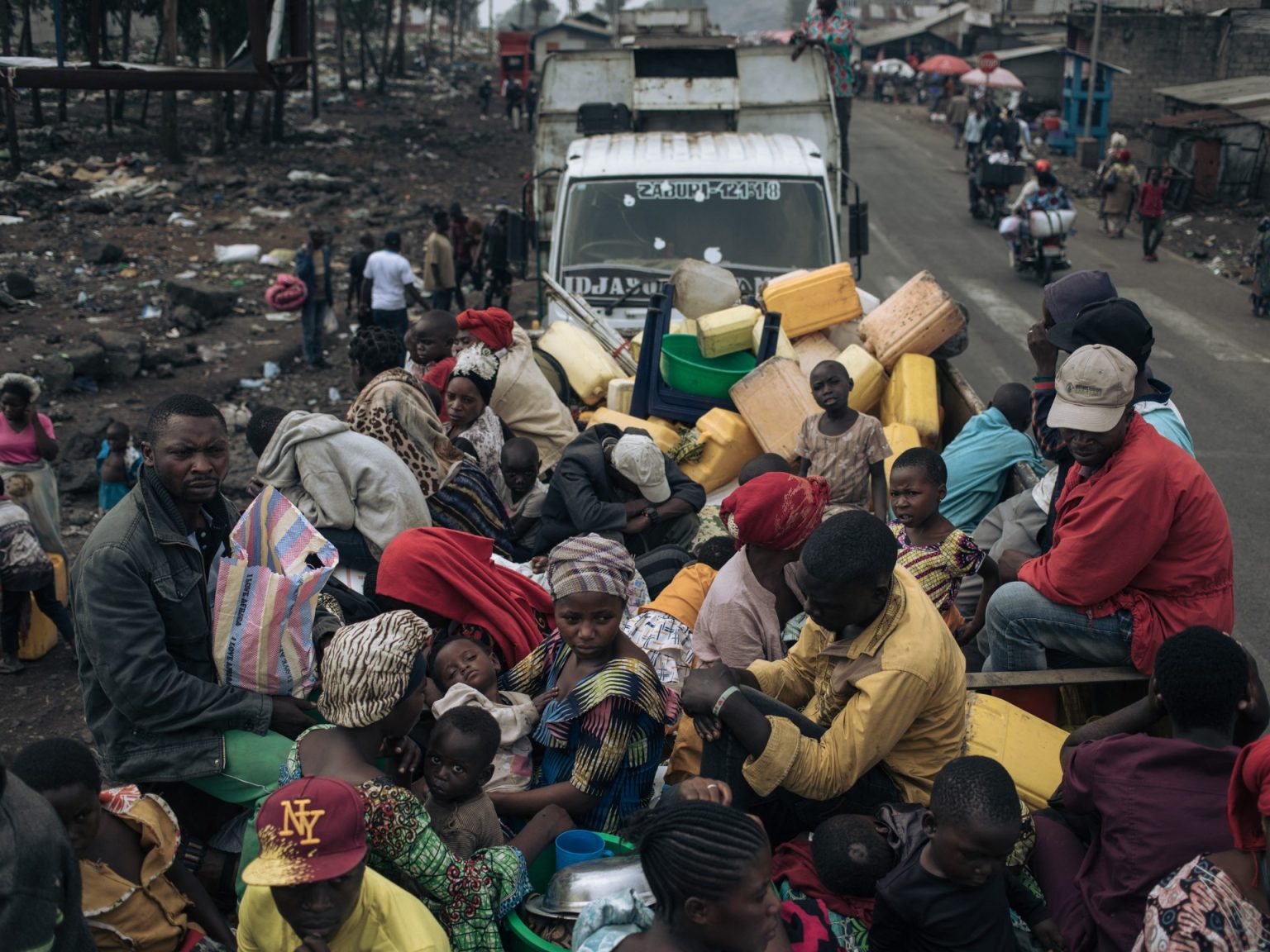The sprawling Kanyaruchinya displacement camp, once a teeming tapestry of white makeshift huts on the outskirts of Goma, Democratic Republic of Congo (DRC), now stands desolate, a stark testament to the latest upheaval in the war-torn region. The advance of the Rwanda-backed M23 rebels on Goma has triggered an exodus of approximately 100,000 internally displaced people (IDPs), who had sought refuge in the overcrowded hillside camp for years, fleeing the relentless violence that has plagued eastern DRC for decades. The M23 offensive is the latest chapter in a protracted conflict involving a multitude of armed groups, a conflict that has claimed an estimated six million lives over the past three decades, leaving an indelible scar on the mineral-rich region. The emptied camp serves as a poignant reminder of the human cost of this enduring conflict, a silent witness to the displacement, suffering, and uncertainty that have become a grim reality for countless Congolese.
Life within Kanyaruchinya was characterized by deprivation and hardship, a constant struggle for survival against the backdrop of pervasive violence. Residents, displaced from their homes and communities, constructed precarious shelters from sticks and tarpaulin, a fragile defense against the elements and a symbol of their precarious existence. Hunger was a constant companion, gnawing at the bellies of the displaced, while inadequate sanitation and hygiene bred recurrent outbreaks of cholera, adding another layer of misery to their already dire circumstances. The camp became a microcosm of the broader crisis, reflecting the devastating impact of the conflict on the region and the desperate plight of those caught in its crosshairs. The decision to leave, while tinged with a mixture of relief and apprehension, was ultimately driven by the harsh realities of life within the camp’s confines.
As the last remnants of the camp’s population prepared to depart, a sense of ambivalence hung heavy in the air. While some expressed a sense of relief at the prospect of returning home, however uncertain that prospect might be, others emphasized the lack of viable alternatives, highlighting the desperate circumstances that propelled their decision. A shared thread of anxiety about the future wove through their conversations, reflecting the deep-seated uncertainty that permeated their lives. Overcrowded trucks lined the roadside, ready to transport the final contingents of displaced people, their journeys symbolic of the mass displacement and the long road to recovery that lay ahead for the region.
The stories of those leaving Kanyaruchinya paint a vivid picture of the human toll of the conflict. Denise Zaninga, seated at the back of a packed truck, lamented her departure, echoing the sentiment of many who left the camp with nothing but the clothes on their backs. Having arrived as a displaced person with nothing, she was now returning home in the same destitute state, her future shrouded in uncertainty. Her poignant words, “I am leaving but I don’t know where I’m going to live,” capture the precariousness of their situation and the lack of viable options available to them. Others shared her anxieties, their voices a testament to the pervasive fear and uncertainty that gripped the displaced population.
Christine Bwiza, another displaced person, articulated the collective despair, highlighting the devastating consequences of the protracted conflict. “Our homes are destroyed, our children are lost because of the war, and we are returning home hungry,” she lamented, her words encapsulating the multifaceted challenges facing those returning to their ravaged communities. The loss of homes, the separation of families, and the persistent threat of hunger painted a bleak picture of the future, underscoring the immense challenges of rebuilding lives shattered by years of conflict. Aline Irafasha’s resigned statement, “hunger will kill us wherever we go, but it’s better to suffer at home,” captured the essence of their predicament, a choice between two equally grim realities.
The irony of the situation was not lost on those leaving the camp. The very group responsible for their displacement, the M23 rebels, had reportedly financed their return. The driver of the truck transporting them confirmed that the M23 had paid for the vehicle and the journey itself, a gesture that seemed both cynical and opportunistic, given the rebels’ role in creating the displacement crisis in the first place. With the M23 and Rwandan troops now in control of Goma, the frontline had shifted, momentarily easing the immediate threat of violence. However, the underlying causes of the conflict remained unresolved, leaving the future of the displaced and the region as a whole hanging precariously in the balance. The emptied camp stood as a stark reminder of the fragility of peace and the enduring human cost of conflict in the DRC.

